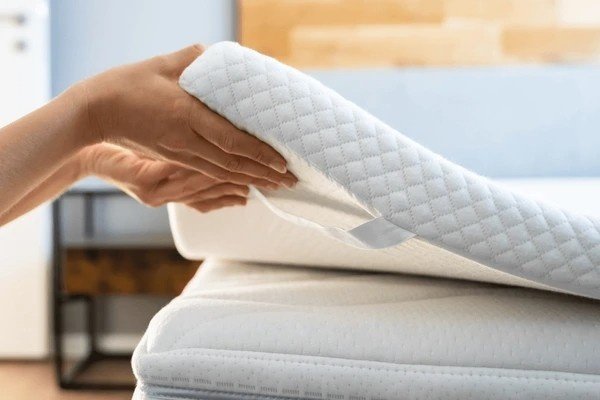When I first started working from home, I underestimated how important my desk would be. At first, I thought any table would do, but over time, I realized that my productivity, comfort, and even health depended on having the right workstation. Choosing the perfect home office desk isn’t just about aesthetics; it’s about functionality, ergonomics, and personal preferences. After all, you’ll spend hours every day at your desk, so it’s worth finding the one that suits you best.
In this guide, I’ll walk you through the critical considerations for buying a home office desk, comparing different types, materials, and features to help you make an informed decision.
Table of Contents
1. Understanding Your Workspace Needs
Before you start shopping, ask yourself these questions:
- How much space do I have? Measure your room and decide where the desk will go. Leave enough room for movement and other furniture.
- What will I use the desk for? Are you a writer who needs minimal equipment, or do you need space for multiple monitors, a printer, or crafting supplies?
- How long will I use the desk daily? If you’ll spend long hours at your desk, focus on ergonomics.
2. Types of Home Office Desks
There are many types of desks, each with unique features. Here’s a comparison table to help you decide:
| Type | Description | Best For | Considerations |
|---|---|---|---|
| Standard Desk | Simple design with a flat surface. | General tasks like writing or laptop use. | Limited storage unless paired with accessories. |
| Standing Desk | Adjustable height allows standing and sitting. | Health-conscious individuals. | Costs more; needs power for electric models. |
| L-Shaped Desk | Fits into corners; provides two work surfaces. | Multi-taskers and small spaces. | Can be difficult to rearrange. |
| U-Shaped Desk | Surrounds you with workspace on three sides. | Large setups or multiple devices. | Requires significant room space. |
| Executive Desk | Large, often ornate; includes storage. | Professionals who need a centerpiece. | Bulky and expensive. |
| Folding Desk | Portable and compact; folds away when not in use. | Small spaces or temporary setups. | Limited stability and storage. |
| Writing Desk | Minimalistic design; focuses on writing or laptop work. | Writers or minimalist setups. | No storage or cable management. |
| Gaming Desk | Includes features like cable management and space for multiple monitors. | Gamers or tech-heavy setups. | May look out of place in non-gaming settings. |
3. Materials Matter
The material of a desk affects its durability, appearance, and maintenance. Here’s what you should know about common desk materials:
| Material | Pros | Cons |
|---|---|---|
| Wood | Durable, classic, and timeless. | Heavy; can be expensive. |
| Engineered Wood | Affordable and lightweight. | Less durable; may chip over time. |
| Metal | Sturdy and modern. | Prone to scratches and dents. |
| Glass | Sleek and stylish. | Fragile; requires frequent cleaning. |
| Laminate | Budget-friendly and easy to clean. | Can peel or warp over time. |
| Bamboo | Sustainable and lightweight. | Less durable than hardwood. |
4. Ergonomics and Comfort
Ergonomics play a vital role in preventing discomfort and injuries. Here’s what I recommend:
- Desk Height: Standard desks are about 29 to 30 inches high. Ensure your elbows are at a 90-degree angle when typing.
- Leg Space: Leave at least 24 inches of width and 18 inches of depth under the desk.
- Keyboard Tray: A keyboard tray can reduce wrist strain by positioning your keyboard at the correct height.
- Monitor Positioning: Your screen should be at eye level, about 20 inches away from your face.
5. Storage and Organization
If your work involves a lot of paperwork or tools, consider desks with built-in storage. Options include:
- Drawers: Keep documents and stationery within reach.
- Shelves: Store books, decor, or gadgets.
- Cable Management: Desks with built-in cable trays or grommets keep wires organized.
Here’s a table comparing storage options:
| Feature | Advantages | Disadvantages |
|---|---|---|
| Built-in Drawers | Convenient access to items. | Adds weight; may limit legroom. |
| Modular Shelves | Flexible arrangement. | Takes up extra room. |
| Hutch | Maximizes vertical space. | Can look bulky in small rooms. |
| Hidden Compartments | Keeps clutter out of sight. | Limited accessibility. |
6. Size and Dimensions
Choosing the right size ensures that your desk fits your room without crowding it. Here are some common desk dimensions:
| Desk Type | Width (inches) | Depth (inches) | Height (inches) |
|---|---|---|---|
| Small Desk | 36-48 | 20-24 | 28-30 |
| Medium Desk | 48-72 | 24-30 | 28-30 |
| Large Desk | 72+ | 30+ | 28-30 |
7. Budgeting Wisely
Desks come in a wide price range. Here’s how to balance cost with quality:
- Under $100: Basic desks made of engineered wood or laminate.
- $100-$300: Mid-range options with better materials and features.
- Over $300: Premium desks with solid wood, metal frames, and advanced features.
8. Aesthetic and Style
Your desk should blend with your home’s decor. Here are some popular styles:
| Style | Description | Best Matches |
|---|---|---|
| Modern | Clean lines and minimalistic. | Contemporary homes. |
| Traditional | Ornate and elegant. | Classic interiors. |
| Industrial | Metal frames with wooden tops. | Loft-style or rustic spaces. |
| Scandinavian | Simple, light-colored wood designs. | Bright and airy rooms. |
| Rustic | Distressed wood and natural finishes. | Country-style homes. |
9. Assembly and Maintenance
Some desks arrive fully assembled, while others require you to put them together. Consider:
- Ease of Assembly: Check reviews for assembly difficulty.
- Tools Needed: Many desks include the necessary tools, but it’s good to have a screwdriver on hand.
- Maintenance: Wipe desks regularly to avoid dust buildup. Use coasters to prevent water damage.
10. My Top Picks for Home Office Desks
To help you get started, here are a few examples of desks that cater to different needs:
| Desk Name | Type | Key Features | Price Range |
|---|---|---|---|
| IKEA MICKE Desk | Standard | Compact with built-in storage. | $50-$100 |
| Flexispot EC1 | Standing | Height-adjustable; sturdy frame. | $200-$300 |
| Walker Edison Desk | L-Shaped | Glass top; modern design. | $150-$250 |
11. Final Thoughts
Choosing the perfect home office desk is a personal journey. It’s about finding a balance between function, comfort, and style. I recommend taking your time, measuring your space, and considering your work habits. A well-chosen desk can transform your home office into a productive and inviting space.





